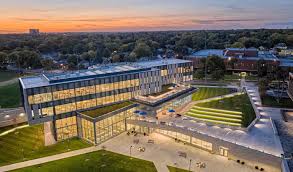From aging science buildings to state-of-the-art residence halls, today’s university campuses are a blend of tradition and innovation. But for facilities management teams, this diversity comes with complexity—especially when maintaining infrastructure across dozens (sometimes hundreds) of buildings.
While many institutions already use some form of university facilities management software, a major productivity issue still lingers: lack of immediate, mobile access to critical building information. In a fast-moving environment, that gap can be costly—not only in dollars but also in safety.
Let’s explore how smart building access can transform how higher education teams manage facilities—and why mobile-enabled tools are becoming essential to modern campus operations.
The Growing Burden of Deferred Maintenance in Higher Ed
Universities across the country are facing a growing crisis: deferred maintenance. Budget constraints, staff shortages, and aging infrastructure all contribute to maintenance backlogs. What begins as a minor leak, loose fixture, or faulty HVAC system can quickly escalate into a costly repair or shutdown.
One major reason for delays in maintenance resolution is not the lack of tools—but the lack of access to the right information at the right time. Even the best facility management software for higher education won’t be effective if maintenance teams must leave the field to dig through file cabinets or locate building plans stored in scattered departments.
Providing mobile access to those plans, shut-off maps, and O&M manuals can help reduce delays, eliminate inefficiencies, and get campuses back to normal faster.
University Buildings Hold Decades of Information—And It’s Disappearing
Many universities have buildings that are 50, 70, or even over 100 years old. Over the years, these facilities undergo numerous upgrades, repairs, and retrofits. Each of these projects generates documentation—floor plan revisions, utility changes, equipment replacements—that are often stored in silos across departments or buried in storage rooms.
A hidden risk emerges when long-serving employees retire, often taking institutional knowledge with them. How to navigate a tricky electrical panel? Which renovations added shut-off valves? Without smart ways to document and share this information, new hires are left guessing.
Consolidating all this legacy data into a central platform—and making it accessible through mobile devices—ensures that no knowledge is lost and new staff can get up to speed quickly.
Emergency Response Depends on Fast Information
In a crisis—whether it’s a fire, flood, gas leak, or worse—time matters. For campus facility teams and first responders, the ability to access building information instantly can mean the difference between containment and catastrophe.
Unfortunately, most university facilities management software isn’t built for emergency speed. Teams often spend precious minutes locating documents or trying to contact others who “know where that shut-off is.”
Enhancing facility software with mobile-ready access to emergency plans, evacuation routes, and safety documentation empowers both in-house staff and emergency crews to act quickly and decisively. It transforms the software from a task scheduler into a critical safety asset.
A New Standard: Information in the Pocket of Every Team Member
Imagine this: A technician receives a work order to repair a heating unit in a campus building. Instead of heading back to the office to look up equipment specs or printed manuals, they pull out a tablet, scan a QR code, and instantly access the system’s operation and maintenance documentation.
Now multiply that by dozens of tasks across multiple buildings per day. The time saved is immense. The accuracy of repairs increases. The backlog shrinks.
This type of functionality doesn’t require replacing your current facility management software for higher education. It simply means enhancing it with mobile access tools that place building intelligence directly in your team’s hands.
Breaking Down the Silos: One Campus, One Source of Truth
Many institutions operate with fragmented systems. A file server might hold as-built drawings. Hard copies of old floor plans might live in a basement. Vendor manuals may only exist in someone’s inbox. And the best knowledge might still reside in a senior technician’s head.
The solution is to consolidate—create a digital master set of all current and historical building data that can be accessed by anyone on your team, anytime, anywhere. This doesn’t replace your software. It strengthens it. When everyone works from the same reliable source, mistakes are reduced, training is faster, and operations become smoother.
The Value of Enhanced Software: It’s Not Replacement, It’s Reinforcement
Universities already invest heavily in CMMS, IWMS, or asset management tools. These platforms are essential for scheduling, tracking, and reporting. But what they often lack is the in-field usability that today’s mobile-first teams demand.
That’s where enhancement solutions come into play. By integrating with your existing systems or operating alongside them, these tools provide the missing link—instant, mobile access to building information in real time.
It’s not about starting over. It’s about making what you already have work better.
Conclusion: Building a More Responsive Campus
Higher education institutions are under pressure to do more with less—to reduce downtime, ensure safety, maintain aging facilities, and prepare for emergencies with minimal disruption. It’s no longer enough to have building information stored somewhere—it needs to be available everywhere your team goes.
By improving how teams access information, campuses can reduce deferred maintenance, retain institutional knowledge, and improve response during emergencies. And when facility staff are empowered with tools that make their jobs easier, the entire campus community benefits.














